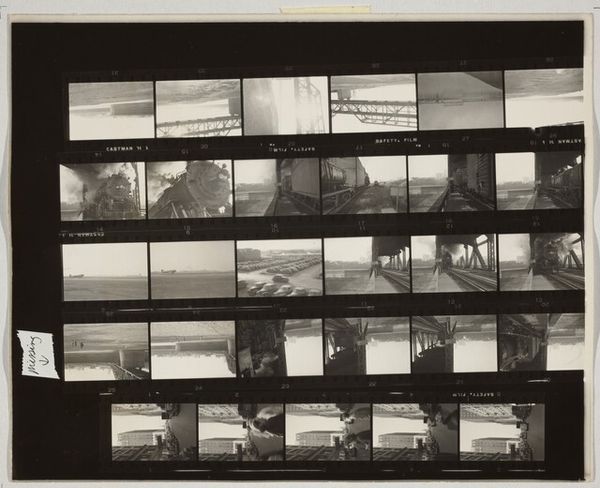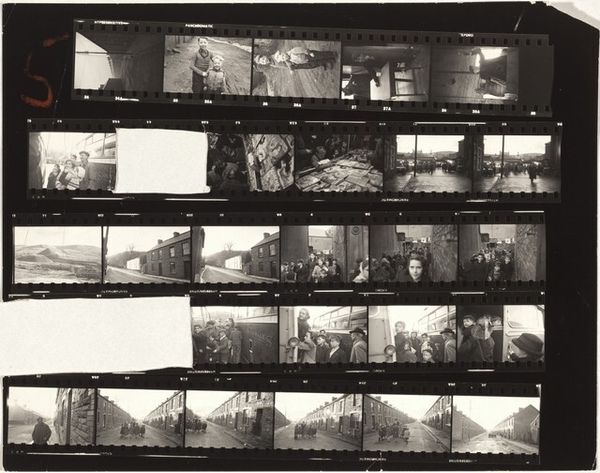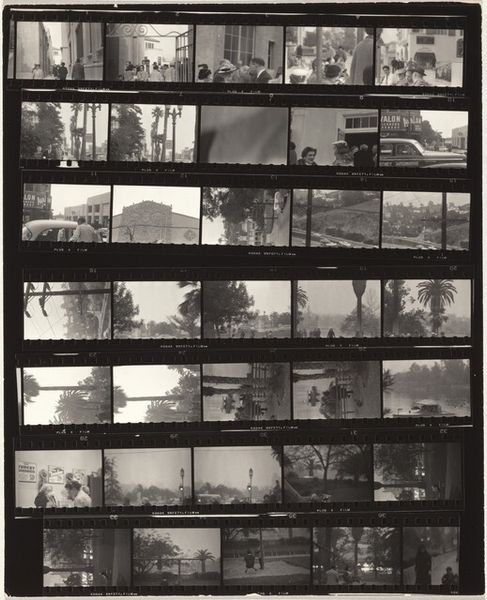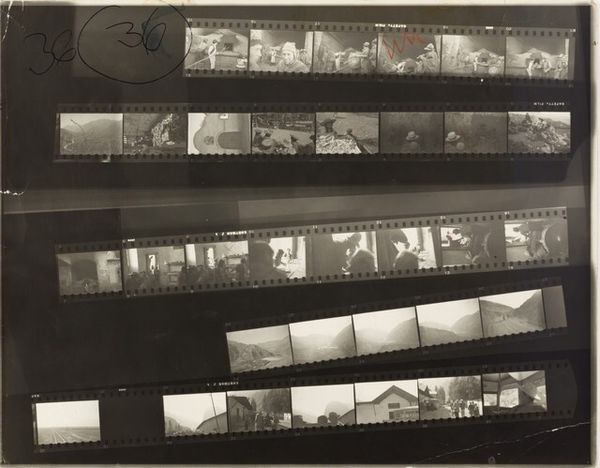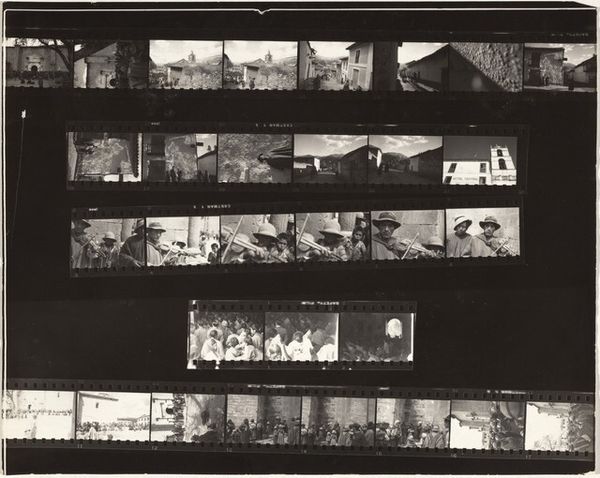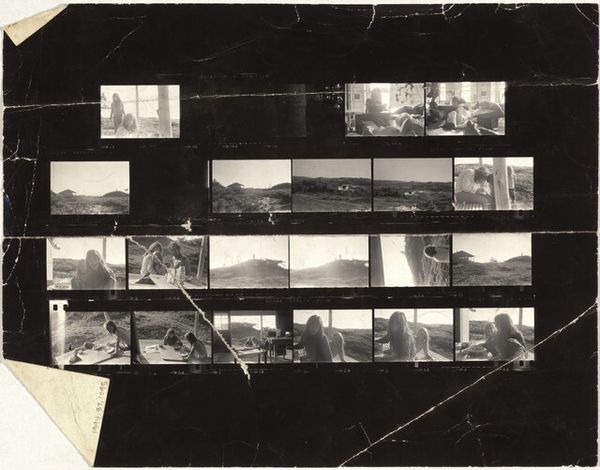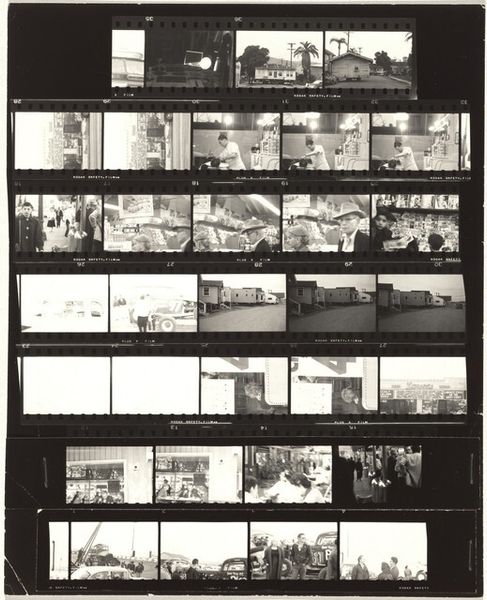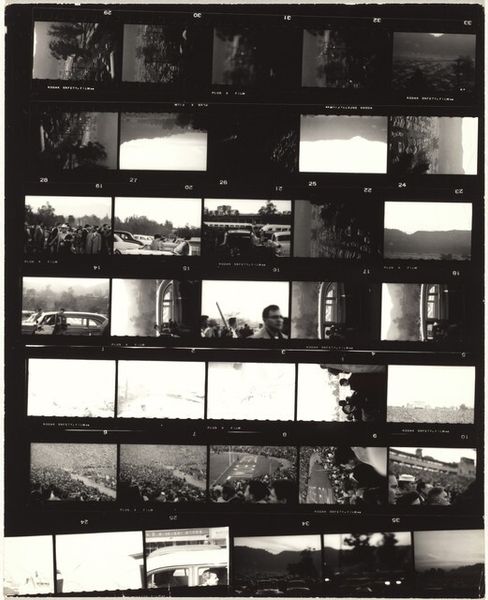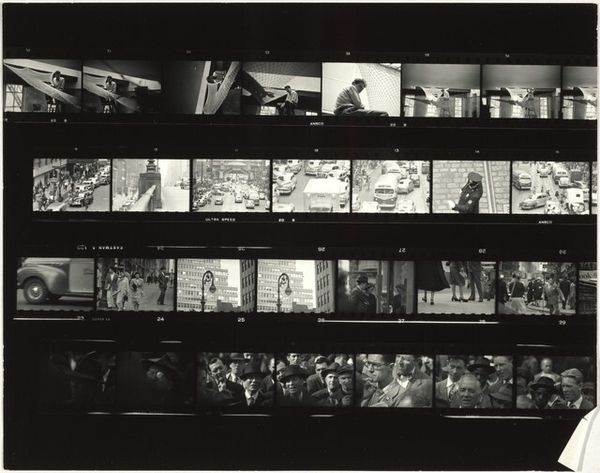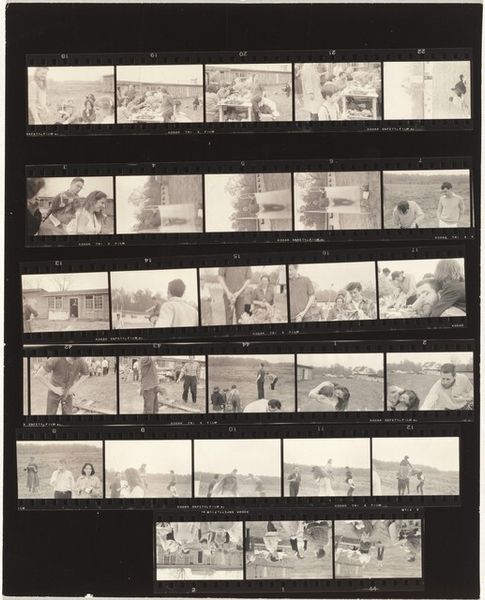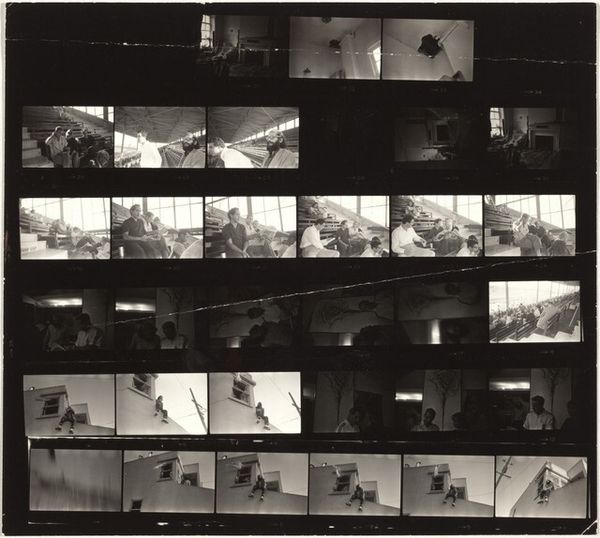
#
excavation photography
#
wedding photograph
#
dark hue
#
dark monochromatic
#
dark silhouette
#
dark shape
#
monochrome photography
#
celebration photography
#
shadow overcast
#
dark
Dimensions: overall: 20.1 x 25.1 cm (7 15/16 x 9 7/8 in.)
Copyright: National Gallery of Art: CC0 1.0
Curator: This is Robert Frank’s “Family--Wellfleet 1,” likely taken around 1962. The artwork shows three rows of black and white film strips laid out against a stark black background. It is a complex arrangement of various scenes involving family or a group, seemingly celebrating. What are your first impressions? Editor: The repetition of images in strips creates a feeling of fractured memories, perhaps. The grainy texture, typical of Frank, enhances the feeling of fleeting moments captured in time, and there’s definitely a bittersweet feeling evoked. It appears somewhat casual, spontaneous. Curator: Precisely! Robert Frank often defied conventional photography rules. In this artwork, he documents a likely celebratory family moment without staged perfection, showing the rawness of a day or experience in a single, uncut contact sheet, an aesthetic decision aligned with the Beat Generation and their values of unfiltered truth and breaking away from social conformities. Editor: The choice of monochrome lends itself to abstraction, directing our eyes toward light, shadows and contrasts. I notice that these formal elements emphasize emotional undertones; each image strip forms part of a wider visual narrative and yet stands as a composition in itself. Curator: He avoids idealizing family bonds, reflecting his commentary on post-war American society by showing imperfect yet intensely human events and intimate, quotidian happenings. Frank questions, through images like these, the very idea of ‘perfect’ or stereotypical families. The context of the Civil Rights movement and increasing social awareness may have compelled the artist to capture ordinary lives in their plain state. Editor: Yes, even the imperfections contribute aesthetically by introducing tonality or a subtle texture. From an arrangement perspective, Frank composes depth through these horizontal strips and organizes moments. His placement of images is deliberate: leading the viewers across distinct though fragmented episodes of collective life and allowing interpretations. Curator: Absolutely. This piece also questions the role of the photograph itself: is it merely a tool for record-keeping, or does it possess capacity for narrative interpretation and deep emotion? Frank challenges these conventional norms through both his artistic presentation and social reflections captured in this unique filmstrip montage. Editor: So, "Family--Wellfleet 1" appears as more than a record; Robert Frank converts common photographic material into profound contemplations around personal histories. Curator: I agree entirely; it reflects the broader currents within America during that era while pushing beyond conventions for personal expressive forms using this intimate medium we often consider just another documenting instrument.
Comments
No comments
Be the first to comment and join the conversation on the ultimate creative platform.
